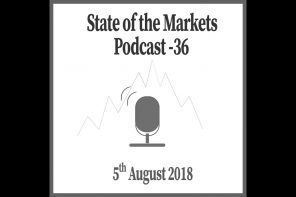By Dr Frank Shostak
There is almost complete unanimity among economists and various commentators that inflation is about general increases in the prices of goods and services. It is also held that to counter general increases in prices, as depicted by the consumer price index the CPI, the central bank should raise interest rates. A tighter interest rate stance by the central bank, it is held, is going to “cool off” the demand for goods and services. This in turn, is likely to weaken the growth rate of the CPI, all other things being equal. However, is inflation about general increases in the prices of goods and services? To provide an answer to this question there is the need to establish the origin of inflation.
The essence of inflation
Historically inflation originated when a country’s ruler such as king would force his citizens to give him all their gold coins under the pretext that a new gold coin was going to replace the old one. In the process, the king would falsify the content of the gold coins by mixing it with some other metal and return diluted gold coins to the citizens.
Because of the dilution of the gold coins, the ruler could now mint a greater amount of coins and pocket for his own use the extra coins minted. What was now passing as a pure gold coin was in fact a diluted gold coin.
Note that what we have here is an inflation of coins i.e. an increase in the quantity of coins. Because of coin inflation, the ruler can now engage in an exchange of nothing for something i.e. he can engage in channeling resources from citizens to himself. Because of inflation of coins there is now more coins per unit of goods i.e. increases in goods prices in terms of coins. Again, the increase in prices in terms of coins comes because of the coin inflation.
Originally, paper money was not regarded as money but merely as a representative of gold. Various paper certificates were claims on gold stored with the banks. Holders of paper certificates could convert them into gold whenever they deemed necessary. Because individuals found it more convenient to use paper certificates to exchange for goods and services, these certificates came to be regarded as money.
Paper certificates that are accepted as the medium of exchange open the scope for fraudulent practice. Banks could be tempted to boost their profits by lending certificates that were not covered by gold. Inflation therefore is an increase in the number of receipts because of receipts not backed by gold yet masquerade as the true representatives of money proper, gold.
As a result of the increase in the number of receipts (inflation of receipts), we now also have a general increase in prices in terms of receipts. Also, here the issuers of the un-backed receipts channel goods to themselves without contributing to the production of goods.
In the modern world, money proper is no longer gold but rather coins and notes; hence, inflation in this case is an increase in the stock of coins and notes.
We can conclude that inflation is about increases in money supply. Since a price of a good is the amount of money per unit of a good, it follows that the increase in money supply, all other things being equal, results in price increases.
Note that we do not say as the monetarists hold that inflation is caused by increases in money supply. We hold that inflation is increases in money supply. Note that for monetarists inflation is about increases in prices, which is set in motion by increases in money supply.
Hence, to establish the state of inflation what matters is not the growth rate of prices but increases in money supply, which set in motion the exchange of nothing for something. This in turn undermines the process of wealth generation and weakens the pool of real savings, all other things being equal.
When this pool is expanding, the increases in money supply generate the illusion that money supply is growing the economy. Once the pool becomes stagnant or starts to decline, a strengthening in the growth rate of money supply cannot cause any longer this illusion.
Observe that the increase in money supply i.e. inflation is going to emerge whenever the central bank engages in the buying of assets. For instance, when it buys Treasury Bonds the central bank pays for the bonds with the newly generated money. This in turn causes an increase in money supply, all other things being equal.
Another source for the increases in the money supply i.e. inflation is the expansion of commercial banks’ lending not backed by savings.
Tight interest rate policy can make things worse
In a free market, interest rates fluctuations are likely to mirror changes in consumer preferences regarding present consumption versus future consumption. If because of increases in wealth consumers were to lower their preference towards present consumption versus future consumption this is going to be mirrored by a decline in the market interest rates. Conversely, if on account of declines in wealth consumers raise their preference towards present consumption versus future consumption this is going to be depicted by an increase in the market interest rates.
Again, in a free market a decline in the interest rates is going to be in response to consumers lowering their preference towards present consumption versus future consumption. Businessmen if they want to succeed, have to abide by interest rates signals. This means that businessmen would have to increase the allocation of resources towards the build-up of an infrastructure in order to be able to produce some time in the future a larger quantity of various consumer goods.
Whenever, the central bank tampers with financial markets and manipulates the market interest rates this falsifies consumers’ instructions to businesses. As a result, businesses establish an infrastructure not in line with consumers’ wishes.
Tight interest rate policy versus the closure of monetary loopholes
Now, a tight interest rate policy of the central bank undermines various nonproductive activities, also known as bubble activities that emerged on the back of the previous low interest rate policy. Observe that the previous low interest rate policy was instrumental in the increase in the growth rate of commercial banks’ lending not backed by savings. The increase in this type of lending diverts wealth from wealth generators to bubble activities.
Conversely, an increase in interest rates arrests the diversion of wealth, because of the decline in the growth rate of lending not backed by savings. This in turn undermines bubble activities and sets in motion an economic bust.
Now, the arrest in the diversion of wealth towards bubbles because of a tight interest rate stance by the central bank should be regarded as good news. This leaves more wealth at the disposal of wealth generators.
Nonetheless, because of the central bank raising interest rates, which is tampering with financial markets, this continues to falsify the interest rate signals. This in turn raises the likelihood that wealth generators continue committing a misallocation of resources.
Consequently, this weakens further the wealth generation process. Hence, a tighter interest rate stance of the central bank by undermining bubble activities and wealth generating activities makes the economic bust more severe and prolong.
Note that because of a tighter interest rate stance less wealth is diverted from wealth generators. We suggest that because of the continues misallocation of resources the overall pool of wealth likely to remain under pressure.
Contrast this with a policy that closes the loopholes for the expansion of money supply. The policy of curbing money supply increases undermines bubble activities because it arrests the diversion of wealth from wealth generators to them.
Such policy however, is great news for wealth generators since now less wealth is diverted from them. This in turn is likely to result in the expansion in the pool of real savings. This expansion in turn is likely to shorten the period of the economic slump and make the slump less severe.
We suggest that by employing an erroneous definition of inflation Fed policy makers attacking the symptoms rather than the causes of inflation. As a result, they are making things much worse. Again, inflation is increases in money supply that as a rule generates increases in prices.
To counter inflation then what is required is to curb increases in money supply and not increases in the prices of goods and services. By curbing increases in money supply, the impoverishment of wealth generators is going to be curbed too.
Conclusion
A tighter interest rate stance by the central bank undermines not only bubble activities but also wealth generating activities. This in turn only prolongs the economic slump.
If the central bank were to focus on true inflation, which is increases in money supply, the effects of curbing the monetary growth rate are going to be the removal of bubble activities and the strengthening of wealth producers. Consequently, this is likely to shorten the period of the economic slump and make it milder.



